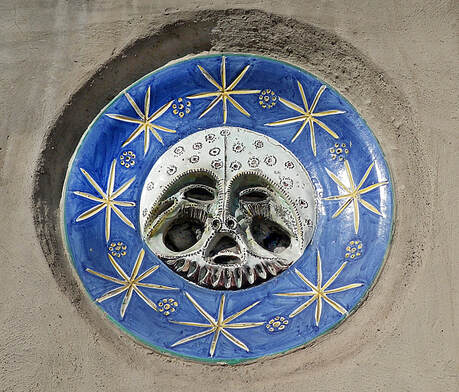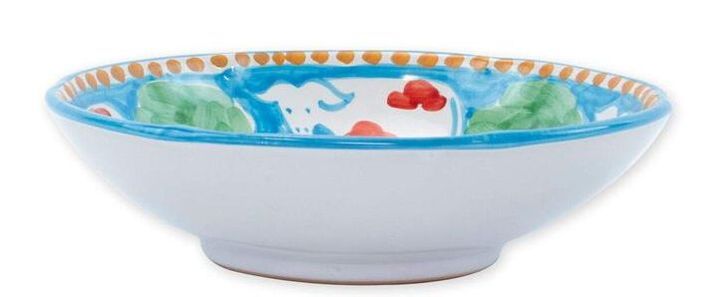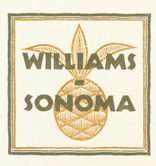|
In Italy, there is a saying, "buono come il pane"... or, "It's as good as bread". This saying is used to compliment the best cooking. Think about it... that's how high Italians value a food as simple as bread, to compare other meals to it. You can't get simpler or better than the humble panino... During our Voyage throughout Italy, one of the simplest and affordable lunches was the panino. Most types of eating establishments have them: the trattoria, pizzeria, ristorante, osteria, taverna, tavola calda (a sort of Italian fast food shop) or bar (all bars are open for breakfast or lunch). In a tavola calda (literally, cold table) might include a wide range of lunch options, both sandwich style and stuffed. A new type is called a paninoteca, which is a shop dedicated to panini and typically open only in the middle of the day for lunch. They are designed as a grab-and-go place, but many will have a few tables. In tourist areas, the restaurants tend to overcharge, but a panino was always an affordable and very satisfying option. In mornings, we also would stop in the local alimentari (like a corner deli) and pick up some cold cuts, cheese and bread to make our own panini while on the road.  One of our favorite (and most used) kitchen appliances is our panino press, the Cuisinart GR-4N 5-in-1 Griddler. We've had ours for about 5 years and it's still in perfect condition (the plates are non-stick and clean well). You can't beat their low price, either. We use the flat platens for making pancakes and switch to the ridged grill plates to make panini. We buy ciabatta with olive oil from the supermarket and can make a couple of fantastic panini in about 5 minutes. One of our favorite ways to make a panino is to slice up some supermarket mozarella-salame rolls (some brands market these cheese rolls as "panino") along with slices of heirloom tomatoes on ciabatta. Set the panino press on high, give it a press for a few minutes and we're back in Tuscany! A Short Panino History The word "panino" literally means "little breads". In Latin, panis means bread. A panino doesn't really need to be heated, as in Italy it is often eaten as a quick snack on the run, in the field, or in the case of an Italian bachelor.... "Ehi! Mamma, make me a snack!" Stuff some peppers and ham inside a small bread roll and Mama gives her big "bambino" a satisfying, quick snack without much effort. (She thinks, "After he gets married, HE is going to look after ME.") This type more precisely is called a panino imbottito, literally "stuffed little bread". Basically it's the same as any American "hero", "hoagie" or deli sandwich. Similar to a panino is the tramezzino, a grilled/pressed sandwich made with slices of hearty white bread, sliced diagonally with the edge crusts removed. If you want a sandwich in an Italian bar, they will ask if you want it "da riscaldere" or "riscaldo" (reheated), "alla piastra" (literally, on the plates), then they will usually place the panino onto a press in between two flat platens, although many will use ridged ones. Throughout early history, bread was considered an entire meal, until it became the support (think foccacia or pizza) or container for a condiment or filling--the sandwich. Historians have found recipes for grilled sandwiches in cookbooks from the ancient Romans and it is belived that sandwiches were common across many ancient cultures. (Take that, Earl of Sandwich!) The bread in the photo above recreates a Roman bread, baked pre-cut into wedges (to pull-apart) and with a string tied around its waist to create a division to help pull the bread apart into two halves. The reason? To put fillings between the slices, what else? In hotos of carbonized breads found in the ruins of Pompeii, while the top was pre-sliced, the bottom half was not. Perhaps they could alternately use the bottom as a support (an edible plate) for fillings? The first reference of a panino appeared in a 16th-century Italian cookbook, with the first mention of "panini" appearing in 1954 in the New York Times in an article about an Italian festival in Harlem: "The visitors ate Italian sausage, also pizze fritta, zeppole, calzone, torrone, panini, pepperoni, and taralli." Panini as we know them today, became trendy in Milanese bars, called paninoteche, in the 1970s and 1980s. In fact, in Italy during the Eighties, a cultural fad developed in Milano where teens would meet in panino bars,... the teens were called paninnare. In Sicily, Panini cresciuti ("grown rolls") are fried Sicilian potato rolls containing ham and cheese. Today in Italy, shops that specialize in panini are called panineria, although many of these have morphed into offering a smörgåsbord of many types of sandwiches, not just the classic panino. In Italy, sandwich shops traditionally wrap the bottom of a panino in a sheet of white paper, a way to keep hands clean, making this a true finger food. It couldn't be simpler...  This time I made our panini with slices of salami-mozzarella roll (Boar's Head brand "Panino" roll is nice and spicy, and they also have a Prosciutto version). I find so-called "panino rolls" are becoming a commonplace item in the supermarket fresh cheese section. I learned in Italy that some of the best things can be very simple. This lunch is a good example of this philosophy. Quick, healthy, simple. You can also get more creative too... using grated cheeses like fontina, asiago, smoked gouda or cacciacavalo and using leftover chicken, prosciutto, sausage, caramelized onions, olives, peppers... whatever. (I love making a panino using leftover chicken parmesan!) I highly recommend using a bit of smoked cheese which adds tons of flavor. Today's panino, however, was an ad hoc, simple lunch, like the ones I threw together in Italy. I cut the ciabatta in 4 inch long sections the sliced each horizontally and unfolded them to open. I then slice the salami-mozzeralla into slices a bit less than 1/4" thick and lay 4 on each ciabatta. Some say you need to butter the outside of your bread or brush it with olive oil to make grill marks or a crust, but I omit this step, preferring less fat intake. Besides, I tend to buy "olive oil ciabatta", which helps the browning. if you want more browning, feel free to lightly brush some olive oil on the outside of the panino before cooking. Butter is rarely used in Italian cooking and is never spread on bread, so I wouldn't use it. You can drizzle the contents of your panino with a little olive oil or perhaps a good balsamic, or even a decent store bought Italian dressing. I like to add slices of the best tomatoes I have around, adding moisture to my panino. Black olives or other giardinaria (pickled veggies) are also a good choice. My son, Lucas loves sweet pimentos on his. Try spreading some pesto on the bread too! Setting my panini press to "grill" and to high heat, I let it preheat for a couple of minutes and then load the panini (I can only do 2 at a time of this size). I give it a good pressing at the beginning and try to position the bread (front to back... there's a sweet spot) so the press lid sits flat. After about 2-3 minutes, I give a final press--hearing the panini sizzle. I hold this press for about 30-40 seconds, pull them out, plate them and slice diagonally into triangles. With panini, the longer you press it and hear the ingredients sizzle, the more crunch you will have in your bread. Too many people think a panini is buttered and grilled bread with cold cuts put inside unheated, and many restaurants order packaged sandwich bread with grill marks factory-burned into their crusts, then use it to make make a normal sandwich, calling it a panini. I've even seen sliced factory "panini bread" with the "grill" marks already there. Shame! A true grilled panino must be pressed and heated to meld the ingredients (that's meld, not melt) into one cohesive, gooey mess of deliciousness. And take note, if you use cold cuts and sliced cheese, the cheese must be placed both on top and on the bottom--the melted cheese helps hold the bread together. A grilled panini is not like a normal sandwich... you should not be able to lift the bread off after it's been pressed and cooked. That is, unless you're in Italy, where most basic sandwiches are known as "panini". What I make is a grilled panino. So, get yourself a panino press (no need for an expensive one) and start cooking. Buon appitito! --Jerry Finzi  When we spent some time on the Amalfi Coast, one of our goals was to visit "the" ceramics town--Vietri sul Mare, just west of Salerno. One of its must-see places to visit was the amazing Ceramica Artistica Solimene, one of the most iconic artisan shops for Vietri ceramics. Rather than the geometri, Renaissance designs of other ceramic design shops, Solemene's designs are childlike, with free-handed strokes and creatures and colors of the life along the Amalfi Coast... fish, octopus, pigs, chickens and donkeys. The building which houses the "factory" (if you can call it that, since all the ceramics are made by and painted by hand), is itself a work of art, commissioned by Vincenzo Solimene and completed in 1954. Architect Paolo Soleri designed this masterpiece of architecture, a mid-century modern homage to ceramics, with its inverted, cone shaped exterior covered with terracotta discs.  The interior houses a sales area on the first floor open to the skylights on the roof, with a ramp that spirals upward (no stairs, but there is a small elevator) to different levels where the clay is formed, sculpted and then painted. The spiraling design is similar to modern parking garages. Chain smoking artisans welcome visitors and will even give short lessons on their techniques (our son--then 11--was shown how to attach a handle to a cup). Visiting the Solimene factory can be considered the highlight of spending some time in Vietri sul Mare's ceramics district--there are scores of ceramic shops within a few blocks.  Our own Gallo pattern serving my ratatouille Our own Gallo pattern serving my ratatouille The family business has been creating ceramics for more than a century and has produced tableware, garden ceramics and pots, sculptural pieces, floor and wall tiles--all worked and painted entirely by hand, using a combination of modern and ancient techniques, such as the potter's wheel. Their tableware is food safe (they utilize lead-free glazes) and can even withstand dishwashers. In our own Pennsylvania villa, we serve our meals on Solimene ceramics. So far, in about 5 years, no chips--just compliments. --Jerry Finzi Random pieces decorate the outside of the Solimene building On Amazon...
|
Archives
May 2024
Categories
All
|





















